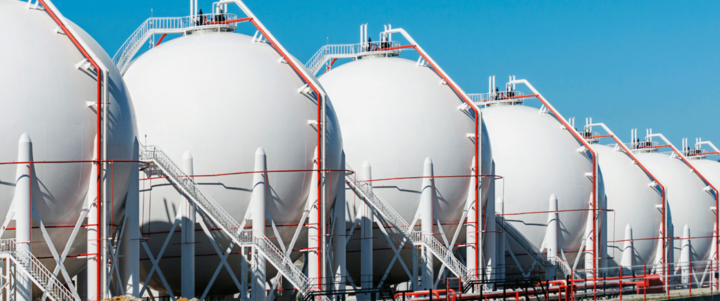Liquefied Petroleum Gas (LPG) Analysis
Liquefied petroleum gas or liquid petroleum gas (LPG or LP gas) is a flammable mixture of hydrocarbon gases used as fuel in heating appliances, equipment’s and vehicles.
Specification of the hydrocarbon composition of LPG is required as traces of hydrocarbon impurities in LPG can negatively effect the fuel quality and processing. The compound distribution data of the hydrocarbons can also be used to calculate properties including relative density, vapor pressure, and motor octane number.
LPG testing and Inspection is provided for LPG products at refineries pipelines and marine and shore tank cargo storage facilities by TUV India.
TUV India provides services to clients involved with LPG production, LPG analytical testing, trace analysis, Quality control during production, storage and cargo custody transfer.
LPG testing is done according to ASTM and other accepted industry standards.
Our Analysis Includes below Test Parameters:
- LPG Composition (C3- C4 Hydrocarbons & Heavier) - ASTM D 2163 / IS 4576: 1999 / IS 14861: 2000 (GC Analysis)
- Dienes (as 1:3 Butadiene)- ASTM D 2163 / IS 4576: 1999 / IS 14861 : 2000 (GC Analysis)
- Vapor Pressure - ASTM D 1267 / IS 4576:1999/ IS 14861:2000
- Copper Strip Corrosion - ASTM D 1848/ IS 4576:1999/ IS 14861:2000
- Hydrogen Sulfide- ASTM D 2420: Reap 2001 / IS 4576:1999/ IS 14862:2000
- Free Water Content- Visual
- Evaporation Residue - ASTM D 2158/ IS 4576:1999:05/IS 1461-2000
- Motor Octane No- ASTM D 2598, IS 4576:1999, IS 14861:2000
- Volatility - ASTM D 1837, IS 4576:1999, IS 14861:2000
- Calorific Value (Net & Gross) - By Calculation
- Sulphur content - ASTM D6228
- Mercapton Sulphur-ASTM D 6228


